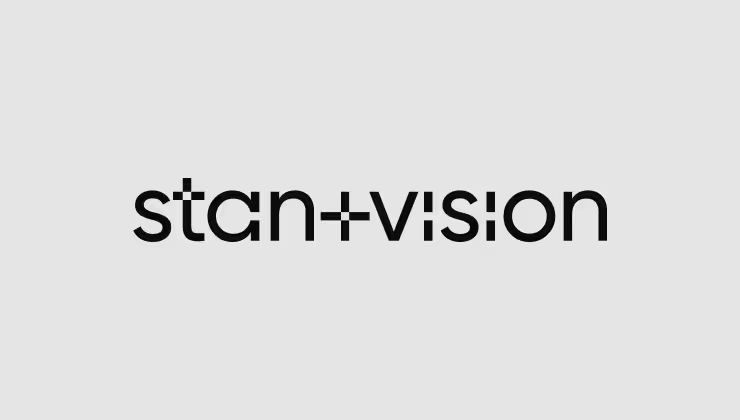Benefits of user-centric design in SaaS product design
User-centric design places the needs, preferences, and behaviours of users at the forefront of product development. By empathizing with users and understanding their pain points, SaaS companies can ideate innovative solutions that directly address user challenges. This approach encourages creativity and out-of-the-box thinking, leading to the creation of differentiated products that stand out in the crowded SaaS landscape.

User-centric design is a powerful part of the user engagement strategy and serves as a differentiator in the competitive SaaS landscape. By delivering intuitive, user-friendly experiences, SaaS companies can attract and retain customers more effectively. Positive user experiences not only lead to increased customer satisfaction but also foster brand loyalty and advocacy.
By continuously improving their products based on user feedback, SaaS companies demonstrate their commitment to meeting the evolving needs of their users, strengthening their competitive advantage.
Core practices for personalized user-centric content
Personalization goes beyond merely inserting a user's name into an email. It entails providing content that aligns with their specific needs, preferences, and behaviors. To achieve this level of customization, you must have a deep understanding of your audience.
By leveraging data analytics and user insights, businesses can create tailored content to increase user engagement. This may include segmenting users based on demographics, browsing history, or previous interactions with the brand. Additionally, implementing dynamic content delivery mechanisms enables real-time customization of content based on user actions or preferences. Personalized messages not only enhance user engagement but also foster brand loyalty and drive conversion rates.
Define your user personas and understand their needs
Too often the product is not designed to cater for a specific audience by focusing solely on a single use case. Most products have 2 to 3 different uses – each based on their unique requirements and priorities. Consider SaaS products to be sold – like CRM. A persona for this product could include: representatives of sales and management roles, and technical admins and there may be subsidiaries, such as marketing and finances who could also use this tool.

Automation and scalability
Automation facilitates scalability by efficiently handling large volumes of content and user interactions without compromising quality. Businesses can streamline content creation, distribution, and personalization processes, ensuring timely and relevant content delivery to users.
This scalability ensures that user-centric content strategies can accommodate growing user bases and help apply enterprise design thinking.
Incorporate user feedback into product design
SaaS startups can adopt several strategies to incorporate audience feedback into their product design process effectively. Establishing direct lines of communication with users through feedback channels, such as in-app surveys, support tickets, and user forums, enables companies to gather real-time insights.

Furthermore, leveraging user analytics tools to track user engagement metrics and behaviors provides valuable data for informed decision-making. Regularly iterating on product features based on customer input ensures that the product remains aligned with evolving user needs.
The role of UX in the customer journey of a SaaS product
User experience (UX) is fundamental in building a user engagement strategy. From the initial awareness stage, where intuitive website design and clear messaging attract potential users, to the post-purchase stage, where seamless user onboarding and intuitive interfaces result in enhanced customer experience and keep users engaged.
A successful UX makes it easier to engage users and lets them easily navigate the product, accomplish their tasks efficiently, and derive maximum value, thereby driving long-term user engagement and loyalty.
Challenges in implementing a user-centric design approach in SaaS
Despite its benefits, implementing a user-centric design approach in SaaS comes with its own set of challenges. One of the primary hurdles is striking a balance between meeting active users' needs and aligning with business objectives. Additionally, gathering comprehensive user reviews, especially in the early stages of product development, can be challenging. Moreover, ensuring consistency in user experience across different devices and platforms adds another layer of complexity.

Balancing innovation with user-centric design principles requires a strategic approach. Here are some of the steps that could help achieve this balance:
- Culture of experimentation and iteration: SaaS companies need to cultivate a culture where experimentation and iteration are embraced. This involves creating an environment where employees feel empowered to explore new ideas and test them rigorously. By adopting agile methodologies and encouraging teams to conduct small-scale experiments, companies can quickly gather feedback and iterate on their products or features based on user insights.
- User feedback loop: Incorporating user reviews into the development process is essential for ensuring that innovations resonate with the target audience. SaaS companies can employ various methods to collect feedback, such as surveys, usability testing, and analytics tools. By regularly soliciting input from users at different stages of product development, companies can identify pain points, validate assumptions, and refine their solutions to better meet user needs.
- Co-creation with users: Engaging users directly in the design process through co-creation activities can lead to more innovative and user-friendly solutions. Methods like participatory design workshops, where users collaborate with designers and developers to brainstorm ideas and create prototypes, allow companies to gain deeper insights into user preferences and behaviours. Similarly, involving users in beta testing phases enables real-world validation of new features before they are fully launched.
- Prioritization based on impact: When deciding which features or innovations to pursue, SaaS companies should prioritize based on both innovation potential and user impact. This involves evaluating ideas against criteria such as market demand, technological feasibility, and alignment with user needs and preferences. By focusing on initiatives that have the greatest potential to deliver value to users while also pushing the boundaries of what's possible, companies can allocate resources more effectively and drive sustainable growth.
- Continuous learning and improvement: Achieving the right balance between innovation and user-centric design is an ongoing process that requires continuous learning and adaptation. SaaS companies should foster a mindset of continuous improvement, where teams reflect on past experiences, learn from successes and failures, and apply those insights to future initiatives. By staying attuned to evolving user needs and market trends, companies can achieve higher customer engagement.

In conclusion, user-centric product design is not just a buzzword but a critical driver of success for SaaS companies. By prioritizing user needs, gathering actionable feedback, and delivering exceptional user experiences, SaaS companies can differentiate themselves in a competitive market, drive innovation, and build long-lasting relationships with their customers. In the fast-paced world of SaaS, embracing a user-centric approach isn't just a choice; it's a necessity for sustainable growth and success.
How can SaaS companies measure the impact of user-centric design on their products?
Measuring the impact of user-centric design requires a multi-faceted approach. Key performance indicators (KPIs) such as user retention rate, customer satisfaction score, and user engagement metric provide valuable insights into the effectiveness of design changes.
Conducting user testing, surveys, and analyzing the user journey to gather feedback is key for the enterprise design thinking approach. Implementing this can offer a deeper understanding of user behaviours and preferences, allowing companies to keep the product design an iterative process and reduce negative experiences while engaging more customers.

Why are user engagement strategies important?
A user engagement strategy is an effective plan which increases user interaction and improves user experience. Engagement strategies in SaaS product design focus on figuring out how to enhance user interaction, satisfaction and retain users within software as a service (SaaS) offerings. These strategies aim to create compelling and user-friendly experiences that encourage users to actively engage with the product and derive maximum value from it.
Additionally, they provide valuable insights into customer preferences, enabling companies to refine their product's key features. Engaged users also differentiate a brand in a crowded market and drive business growth by increasing revenue.

Optimize UX writing to provide contextual and effective messaging
Please do not view UX writing as the last word. Micro copied content in products can help people complete their actions effectively explaining technical information to users in a common language. A well-written copy may even encourage new users to become active users on paid accounts, boosting your income for them. MailChimp is a prime example demonstrating effective written microcopies which motivate new user towards action.
Optimize your push notifications
It's the art of bringing customers into your products. You must ensure the recipients have a proper personal message. Keep your notification quality high. If a user receives too many notifications they will automatically ignore the information. Your goal should be to integrate intelligence within your product so you can reduce noise by focusing on signals. This can be done by modifying the notification options and ensuring user engagement without putting off your customers.

FAQ
What is the user engagement approach?
The user engagement strategies involve actions to attract, retain, and interact with users effectively. It includes personalized communication, gamification, social media interaction, feedback mechanisms, and community building to drive loyalty and achieve business goals.
What is enterprise design thinking?
Enterprise design thinking is an approach that applies the principles of design thinking methodology within large organizations. It focuses on understanding the needs of stakeholders, fostering collaboration, and iterating through problem-solving stages. Key elements include empathy, collaboration, iterative processes, prototyping, and innovation. This approach helps organizations drive innovation, improve experiences, and achieve business objectives efficiently.

.avif)




